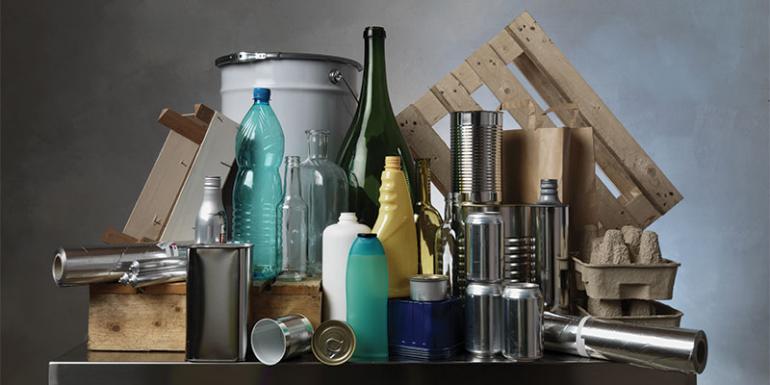The benefits of recycling include €1 billion savings and significantly reduced CO2 emissions

According to the Green Economy Report published by CONAI, recycling led to a reduction of more than 4.3 million tonnes of CO2 emissions in Italy in 2019, the equivalent of 10,000 return flights between Rome and New York. The primary energy saved is capable of meeting the annual electricity requirements of 6 million Italian households. The focus is now on packaging eco-design and incentives for users of secondary raw materials.
In 2019, the direct benefits of recycling in Italy exceeded €1 billion in value terms. This was one of the many positive findings contained in the Green Economy Report, drawn up by CONAI (Italian National Packaging Consortium) in partnership with the Sustainable Development Foundation, which reports on the results of the consortium’s activities.
The figure was obtained by adding together the economic value of the recycled materials (€402 million), the value of the recovered energy (€27 million) and the economic spin-off generated by the sector (€592 million).
More specifically, in 2019 the total savings in virgin raw materials amounted to 4,469,000 tonnes, divided up as follows: 270,000 tonnes of steel, 19,000 tonnes of aluminium (1.8 billion cans), 1,080,000 tonnes of paper, 907,000 tonnes of wood, 433,000 tonnes of plastic and 1,760,000 tonnes of glass.
Packaging recycling carried out by the CONAI consortium also brought savings of almost 23 terawatt-hours of primary energy (compared to 21 terawatt-hours the previous year), equivalent to the average annual electricity consumption of 6 million Italian households. This resulted in more than 4.3 million tonnes of avoided CO2 emissions and an indirect financial benefit of €124 million.
The report also found that between 1998 and 2019, the CONAI system sent almost 32 million tonnes of packaging to be recycled, the equivalent of 160 new medium-size landfills.
“In Europe, Italy is second only to Germany in terms of per capita packaging waste recycling,” said CONAI’s chairman Luca Ruini. “We must now continue to promote eco-design and develop and strengthen recycling technologies in the hope that tax incentives will soon be offered to users of secondary raw materials. Unfortunately, demand is falling and we cannot afford to leave the huge quantities of materials recycled throughout the country unused. For this reason, we hope that Green Public Procurement will soon be implemented along with new End of Waste measures.”
The weak link in the chain, however, is the fact that secondary raw materials are still not being repurchased in sufficient quantities. “In 2020, the year of the pandemic, demand and market prices for virgin raw materials fell sharply due to declining production and consumption, particularly in the case of plastic and paper,” commented Edo Ronchi, Chairman of the Sustainable Development Foundation. “As a result, demand and market prices of secondary raw materials from waste recycling also fell significantly. If our system had not been adequately organised and had been reliant solely on the market, we would have run a serious risk of seeing waste piling up in the streets because recycling, which is currently the main form of waste management, was no longer cost-effective following the sharp fall in market prices of secondary raw materials.”
Northern, Central and Southern Italy proceed at three different speeds
Last year, 53% of the packaging waste collected under the ANCI-CONAI agreement came from northern Italy, 28% from the south and 19% from the central regions.
Southern Italy, however, is the region that has seen the biggest growth in per capita packaging waste collection quantities over the last five years, up by 36 kg per inhabitant to an overall average of 86 kg in 2019 compared to around 100 kg in the northern regions. In Italy, the number of municipalities that have stipulated contracts with the consortium based on the framework agreement with ANCI has remained above 92%. To cover the increased costs of separate waste collection, CONAI paid €653 million to local councils in 2019. A further €1.3 million was allocated to local projects involving some 6.5 million citizens.


















